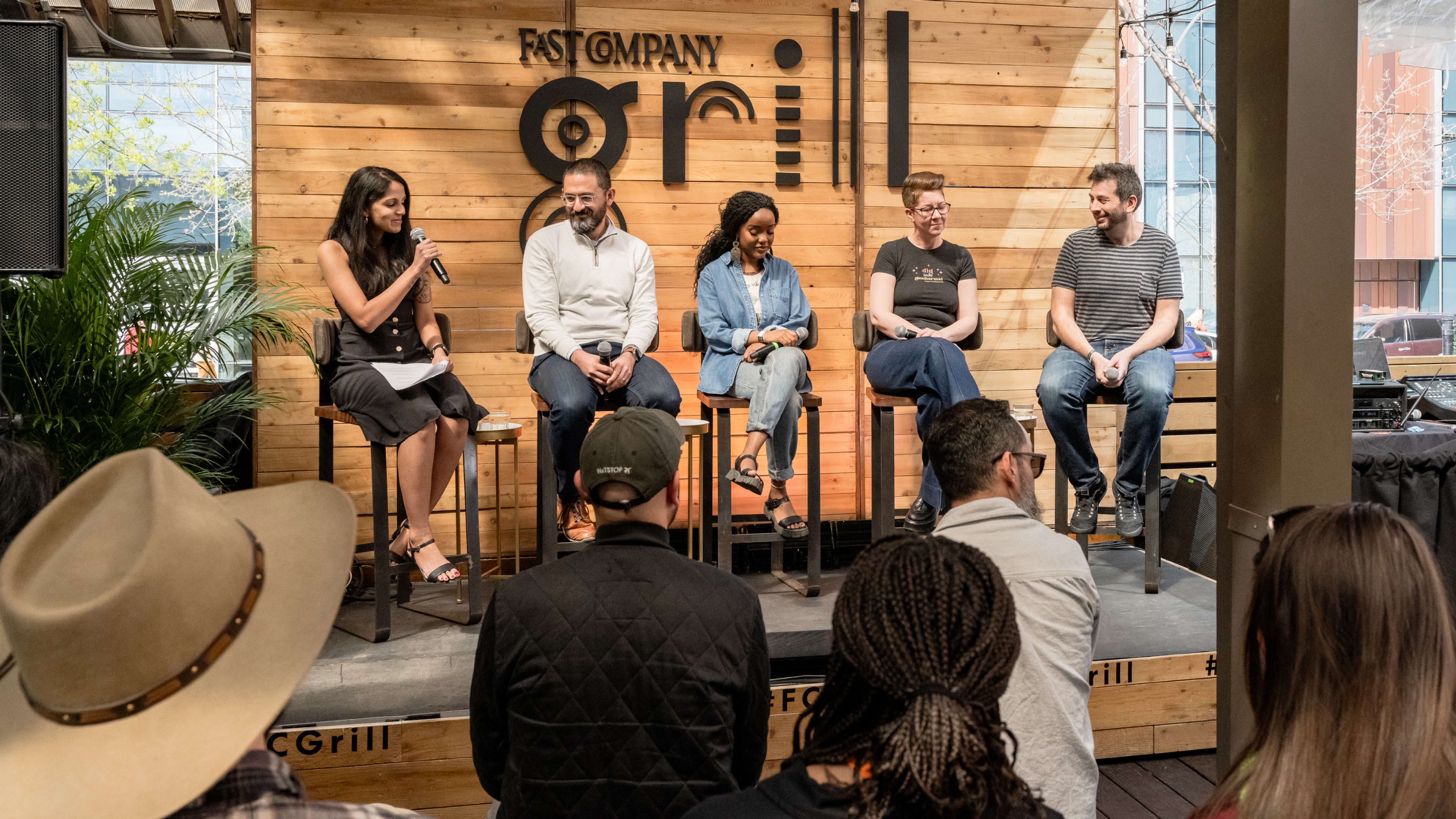The Fast Company Grill hit SXSW this year. Couldn’t make it to Austin? Here are some Fast Bites: Your handy recap of panel discussions.
The relentless news cycle is overwhelming to say the very least.
The climate crisis, tech anxiety, political strife, social divides, and beyond are enough to make most people shut down and disengage with the feeling that these issues have reached an insurmountable point where no real change or impact can occur. According to the World Economic Forum’s Global Risks Report, there’s a predominantly negative outlook for the world over the next two years that’s on track to worsen over the next decade.
While those feelings are certainly justified, there can still be hope.
The Fast Company Grill at SXSW convened a panel around reframing these issues to address them in a more meaningful way.
Rejecting doomerism
Jamie Beard, founder and executive director of international nonprofit Project InnerSpace, works to remove the barriers preventing growth in geothermal energy, a source of clean energy that relies on drilling for heat versus oil. She said the industry faces polarization among its stakeholders, namely oil and gas executives who have their vested interests and environmental and climate activists who have raised their concerns over geothermal production.
“The oil and gas industry has a huge role to play in not only technology transfer and workforce transfer, but also major growth and scale for geothermal,” Beard said. “And a lot of the original advocates for geothermal are actually environmental and climate activists. So we have a situation where we’re bringing to incredibly polarized entities together to do the same thing. And it’s a shit show.”
To her, the issue is a people problem, and she sees Project InnerSpace as a “neutral intermediary” trying to convene the two sides.
“We can have geothermal energy anywhere in the world right now,” she said. “This is not a technological problem. It is a people problem. It is a human problem and it is a polarization problem.”
She continued, “It’s this ‘us versus them, they’re villains, we’re heroes’ kind of mentality that we’re going to have to, as humans, get over if we want to progress.”
Raffi Krikorian, chief technology officer and managing director of the Emerson Collective, also emphasized the importance of acting as a collective, which he tries to illustrate through his Substack newsletter Technically Optimistic. “We try to find people who are telling stories of the stuff that you can do, the change that you can make, the optimism you can find, because I really actually believe in the power of those stories to help inspire you,” he said.
Abandoning the Us vs. Them mentality
The panelists discussed where the “us versus them” mentality and tribalism comes from, and how identity politics divides us and prevents proactive justice in these issues.
Blaise Agüera y Arcas, Google’s CTO of technology and society and an AI researcher, said the divide between cities and rural areas drives much of the polarization in the US and worldwide. In his study on human identity and tribalism for his book Who We Are Now, he found that zip code and population density were the most important drivers of survey respondents’ opinions on identity, behaviors, and beliefs. “Cities are all progressive. It doesn’t matter what state they’re in,” Agüera y Arcas said. “And if it’s rural, it’s all the way on the other side of things.”
“The speed of technological progress, of social progress, and so on is a function of how many people are around you and the diversity of those people,” he continued. “And those things concentrate in the cities. As the urbanization proceeds, the countryside and the city pull further and further apart. I think that’s an underlying cause for a lot of the polarization that we’re seeing, not only in the US but worldwide.”
But he feels there are ways policy can reverse this polarization, namely by focusing immigration on both cities and the rural areas and “reversing racist land policies that have whitened the countryside over the years in the US,” he said. “We tend to ‘other’ the people that we don’t see.”
Taking back the narrative
What’s also important in reframing these issues is reclaiming the narratives around them.
Wawa Gatheru, a Gen Z climate activist and the founder of nonprofit Black Girl Environmentalist, says we often overlook narrative strategy as a means to change people’s thoughts, especially when it comes to the climate.
“You’ll get different polling depending on how you describe the same thing,” she said. “If you talk about water quality versus water pollution, you’re going to get two totally different reactions from different groups of people, even if you’re describing the same things. There needs to be strategy done within the climate movement to really work across those narratives, but then also do it in a way that’s grounded in truth.”
Beard said it’s also important to inform people that they are capable of taking action on climate problems as an individual, even if it seems like such a massive problem.
“The problem with being overwhelmed in doomerism is you look at these massive global problems and they seem so complex and so huge, and it’s really disenfranchising to individual people,” she said. “It’s really a matter of figuring out what you like—what gets you jazzed about climate solutions or social justice or whatever it is. Find an organization that’s kicking ass in that area and be like, ‘Hey, I’m good at this. I paint murals. I’m a writer. Can I help you write something?’”
“And so if you look at problems like that, like, ‘I have this set of skills. How can I apply it within this solution to make a difference?’ It’s a little bit more palatable for folks,” she continued. “And I would challenge all of you pick something and do it.”
Recognize your brand’s excellence by applying to this year’s Brands That Matter Awards before the early-rate deadline, May 3.
